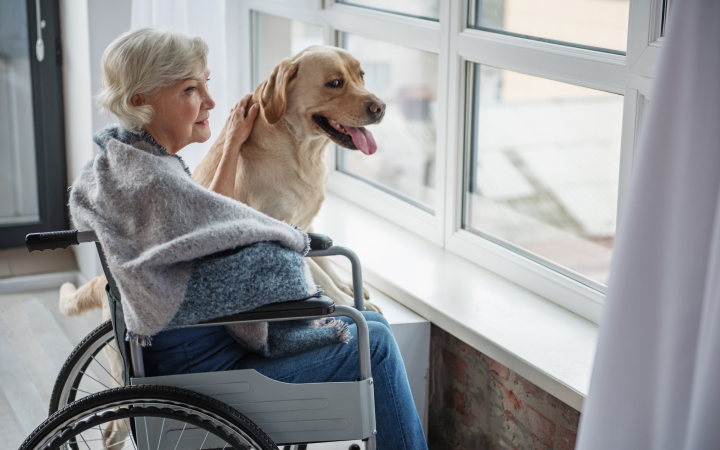
Pets and Service Animals in the Senior Care Environment
It is not uncommon for prospective residents to seek out communities that allow them to keep their pets with them as they transition into a senior living environment. Who could blame them? Pets become a part of our families and provide enhanced quality of life for their owners.
The benefits to senior living residents who have pets are well documented. A March 13, 2020 article by Jeff Hoyt on SeniorLiving.org lists a few of these benefits:
- Helps the resident remain active – managing the needs of their pets such as walking their dogs or providing pet care and grooming promotes regular physical activity
- Deters depression – pets provide comfort and companionship, staving off loneliness
- Enhances social interaction – having a pet draws the attention of others in the community and increases the likelihood of social exchanges
- Relieves stress and anxiety – studies have shown that pet owners tend to have increased serotonin levels which leads to feelings of happiness and decreased anxiety and stress
Aside from companion animals, there is an increasing number of people who are accompanied by service animals. According to a 2016 article published in The Online Journal of Issues in Nursing Vol. 22, No. 1, author Michelle Krawczyk, DNP, ARNP-BC points out that service dogs are covered under the Americans with Disabilities Act, meaning their presence with their owners is a protected by the law. In order to be considered a service dog and have protections under the ADA, a dog must demonstrate a specific, necessary purpose for its owner. Krawczyk explains, “Service dogs provide support for their owners, but they must also provide a trained task in order to qualify under the ADA.” Service dogs “assist their handlers with hearing, mobility, diabetes, seizures, allergies, post-traumatic stress disorder (PTSD), among other conditions.”
While service animals are covered under the ADA, therapy animals and emotional support animals are not. As Krawczyk states, “Knowing the laws and proper procedures regarding service dogs strengthens the abilities of healthcare providers to deliver holistic, patient-centered care.” The ADA also provides direction for questioning individuals about the designation of their animals as service animals versus therapy animals versus emotional support animals. Becoming familiar with the protections afforded to service animals is important.
Regardless of whether a pet serves as a “service animal” or a “companion,” it is easy to recognize all the wonderful benefits that come with allowing a resident in your senior living community to keep a personal pet. However, there are also additional risks associated with permitting resident pets for which the organization must be prepared. Such risks include potential trip hazards, infection control issues, and the possibility of bite injuries. Along with including these risks in the process of care planning for your residents, your organization must have strong policies and procedures in place to address these risk areas. It is also important to work with your senior living insurance professional to ensure that your organization has coverage under the appropriate policies for the risks associated with resident pets being permitted on the premises. To learn more, contact an AssuredPartners Senior Living professional.
Featured News & Insights

The next five years will be critical for senior living and nursing home providers. Shifts in health system consolidation, CMS programs, and hospital partnerships are already reshaping how skilled...

Watch the Webinar Replay In this webinar, we’ll explore the structural changes that are adversely impacting nursing home skilled care revenues. This session will briefly touch on the impact of ACO...

If your senior care facility is struggling with survey performance, you may already be on CMS's radar. The Special Focus Facility (SFF) designation is more than just a label. It's a warning with real...